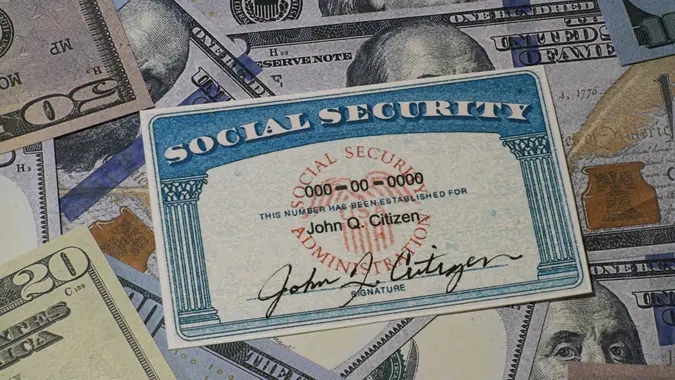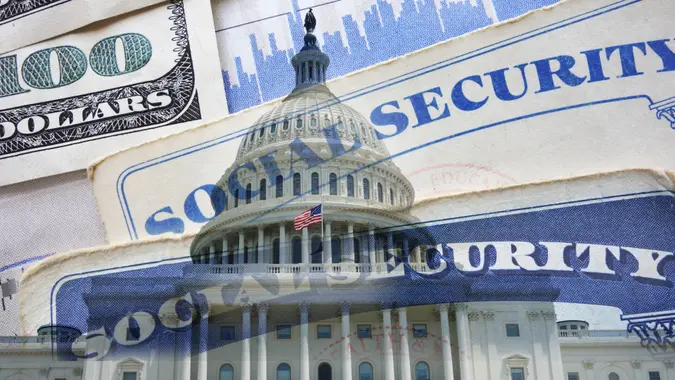3 Changes to Social Security in 2025

Commitment to Our Readers
GOBankingRates' editorial team is committed to bringing you unbiased reviews and information. We use data-driven methodologies to evaluate financial products and services - our reviews and ratings are not influenced by advertisers. You can read more about our editorial guidelines and our products and services review methodology.

20 Years
Helping You Live Richer

Reviewed
by Experts

Trusted by
Millions of Readers
Social Security acts as a lifeline for many retired Americans, and any changes can significantly impact a retiree’s budget. As with every year, retirees have to take into account things such as the Cost-of-Living Adjustment (COLA) to ensure their fixed incomes can cover their monthly expenses.
To help retirees better understand and prepare their finances, GOBankingRates has broken down the three changes to Social Security this year, and how they could affect you.
The 2025 COLA Is Smaller
People receiving Social Security checks can expect a 2.5% COLA for 2025, which is down from 3.2% in 2024. According to the Social Security Administration (SSA), starting in January, the estimated average retirement benefit increased by $49 a month, from $1,927 to $1,976. This increase is the lowest COLA percentage in the last four years.
2025 is similar to other years as the COLA calculation has historically underestimated the actual inflation experienced by retirees. This is because it uses a consumer price index (CPI) based on the spending habits of clerical workers and urban wage earners, which doesn’t accurately reflect the expenses of seniors. As a result, COLAs have consistently fallen short of covering the true cost increases faced by retirees, leading to a significant loss in purchasing power over time.
Full Retirement Ages Are Moving Later
This change affects those who haven’t yet retired but are planning to do so in the near future. The full retirement age (FRA) will increase in 2025. Those who were 66 in 2024 have an FRA of 66 and eight months, but those turning 66 in 2025 will have an FRA of 66 and ten months. Anyone turning 66 in 2026 or later will have an FRA of 67.
This change is important for retirees to consider when deciding when to start claiming their benefits. Claiming benefits even one month before your FRA results in early filing penalties that permanently reduce your monthly benefits.
To avoid these penalties, you must wait until exactly 66 and 10 months if you turn 66 next year. The reduction is 5/9th of 1% for each of the first 36 months you receive benefits before your FRA and 5/12th of 1% for any month before that.
With a later FRA, you must either work a few additional months to avoid early filing penalties or accept a lifetime reduction in benefits by claiming them early. It’s crucial to understand how FRA is changing to make an informed decision about when to claim your benefits.
The Taxable Earnings Increase
As any member of the workforce knows, the federal taxes you pay support Social Security to the tune of 6.2%, which employers must match. There is an annual cap on taxable earnings, which will increase in 2025. The maximum taxable income is going up to $176,100 from the 2024 limit of 168,000.
Things You Can Do Now To Prepare
If you’re concerned about a higher full retirement age and a smaller COLA in 2025, here are three things you can do to help your finances:
Get a Side Hustle
Side hustles can help boost your income, especially if your retirement funds are lacking. This can range from babysitting, dog walking, pet sitting, becoming a rideshare driver or grocery delivery driver and more. Many side hustles offer flexibility and a chance to make some extra cash to supplement your retirement.
Build Your Emergency Fund
Having at least three to six months’ worth of cash on hand is crucial. Be sure to add more cash to your emergency fund as you near retirement and park your money in a high-yield savings account so you can benefit from the magic of compound interest.
Reduce Unnecessary Spending
Take some time to go through your bank statements to identify expenses that you may be able to reduce or eliminate altogether. That streaming service that you only use once every three months, the $5 latte on your way to the office, and that gym membership that you no longer use but still pay for: these are all expenses to cut so you can make room in your monthly budget for saving and investing.
 Written by
Written by  Edited by
Edited by 
























